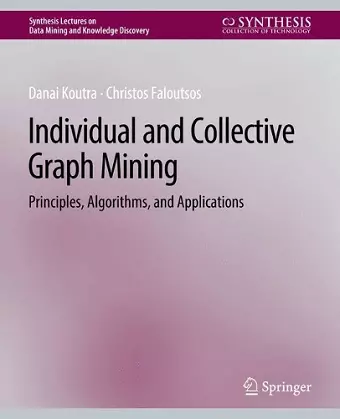Individual and Collective Graph Mining
Principles, Algorithms, and Applications
Christos Faloutsos author Danai Koutra author
Format:Paperback
Publisher:Springer International Publishing AG
Published:26th Oct '17
Currently unavailable, and unfortunately no date known when it will be back

Graphs naturally represent information ranging from links between web pages, to communication in email networks, to connections between neurons in our brains. These graphs often span billions of nodes and interactions between them. Within this deluge of interconnected data, how can we find the most important structures and summarize them? How can we efficiently visualize them? How can we detect anomalies that indicate critical events, such as an attack on a computer system, disease formation in the human brain, or the fall of a company? This book presents scalable, principled discovery algorithms that combine globality with locality to make sense of one or more graphs. In addition to fast algorithmic methodologies, we also contribute graph-theoretical ideas and models, and real-world applications in two main areas:
- Individual Graph Mining: We show how to interpretably summarize a single graph by identifying its important graph structures. We complement summarization with inference, which leverages information about few entities (obtained via summarization or other methods) and the network structure to efficiently and effectively learn information about the unknown entities.
- Collective Graph Mining: We extend the idea of individual-graph summarization to time-evolving graphs, and show how to scalably discover temporal patterns. Apart from summarization, we claim that graph similarity is often the underlying problem in a host of applications where multiple graphs occur (e.g., temporal anomaly detection, discovery of behavioral patterns), and we present principled, scalable algorithms for aligning networks and measuring their similarity.
ISBN: 9783031007835
Dimensions: unknown
Weight: 401g
197 pages